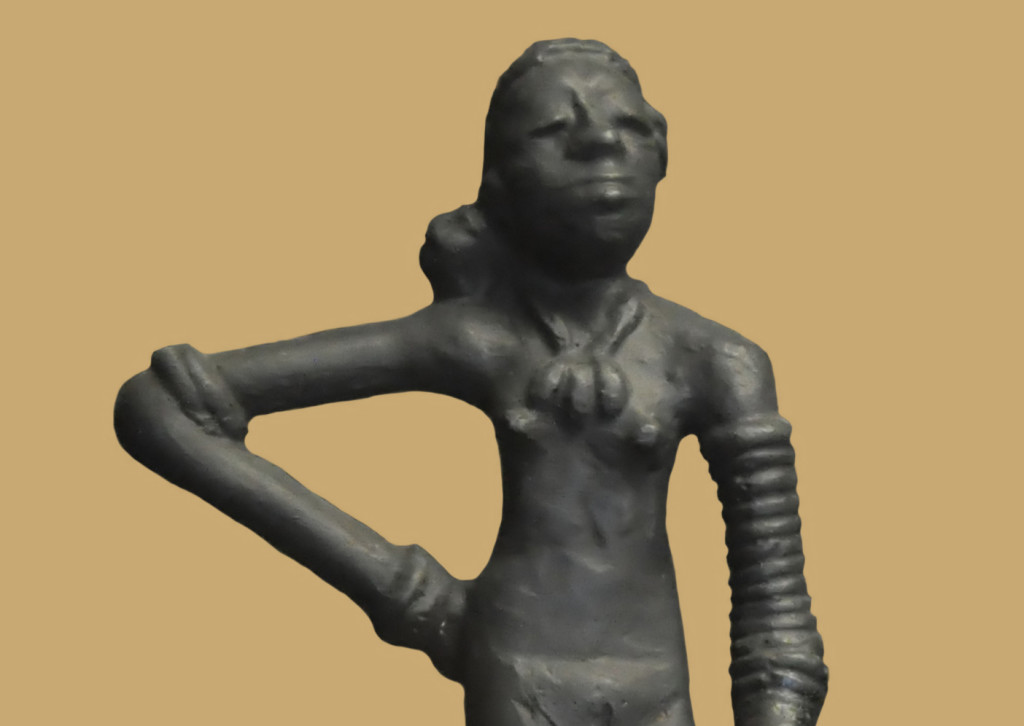This is a battle India should not mind losing to Pakistan. To be sure, right now Islamabad is not fighting this battle. At present, a Pakistani lawyer has filed a petition to ask his government to bring back a 5,000-year-old bronze statue called ‘Dancing Girl’ from India. One hopes that at some point the authorities in our western neighbor take up to his cause, for in doing so they would accept their own past and, more importantly, tacitly effect a breach (howsoever small) with the Arabs.
Quoting a Dawn report, a PTI new story said that Barrister Javed Iqbal Jaffrey on Monday filed the petition in the Lahore High Court for a suo motu action by the court. The 4,500-year old, 10.5-centimetre high statue was discovered in 1926 from the ancient city Mohenjodaro of the Indus Valley Civilization in Sind.
The petitioner, claiming that the statue is the property of the Lahore Museum, said that it was taken to India around 60 years ago at the request of the National Arts Council, Delhi, and was never returned. This claim has received some kind of official support. Jamal Shah, Director General of the Pakistan National Museum of Arts, has said that a letter would be written to the United Nations Educational, Scientific & Cultural Organization or Unesco to bring the statue back. “This is important if we want to protect our heritage.”
It is heartening to note that there are such people in Pakistan which has instituted, or tried to institute, disdain for everything that has emerged from their own land, be it civilization, culture, or language. It is the only country in the world that has imported an alien faith, Islam, and an alien language, Urdu, and termed them as ‘national.’ And it is the only nation established in the name of Islam.
As the prominent Pakistani-American historian Ayesha Jalal wrote in a paper, ‘Conjuring Pakistan: History as Official Imagining,’ in 1995, “Proclaiming itself an ‘Islamic state’ created on the bedrock of a non-territorially defined Muslim nation or ummah, the architects of Pakistan embraced the idea of the nation-state without conceding space to territorial nationalism in their official ideology. Yet that has not resolved the problem of identity posed by the demographic fact of more Muslims in the subcontinent living outside the territory of the much vaunted homeland for India’s Muslims. While the lack of convergence between Muslim identity and Muslim nationhood invited ingenuity in argument, the struggle for formal self-definition has been conducted in pitched battles between a vocal Islamic lobby and their so-called ‘secular’ and ‘modernist’ opponents. The dilemmas of imagining a coherent Pakistani nation have been compounded by regional and linguistic diversities which have resisted being melted down to fit the monolithic moulds of the state’s Islamic identity.”
Pakistani historian have been trying to, writes Jalal square “the circle of Pakistan’s ideological and geographical origins.” So, officially, Pakistan’s history begins with Mohammad bin Qasim’s attacks in the seventh century in Sind. A Text Book of Pakistan Studies by M.D. Zafar says that Pakistan “came to be established for the first time when the Arabs under Mohammad bin Qasim occupied Sind and Multan.” Further, by the thirteenth century, “Pakistan had spread to include the whole of Northern India and Bengal.” Under the Khiljis, “Pakistan moved further southward to include a greater part of Central India and the Deccan.”
After the Mughal Emperor Akbar’s deviations and heresies, according to Zafar, “the spirit of Pakistan asserted itself” and “gathered in strength” under Aurangzeb. Unsurprisingly, his demise “weakened the Pakistan spirit.”
So, as per the official version, Pakistan—more than India—is an idea rather than geography; and the locus of its history is Islam. One way of looking at it to call it contrived—and contrived it is; but the contrivance is the product and function of the Islamic ideology. In his travelogue, Among the Believers, V. S. Naipaul wrote “The time before Islam is a time of blackness: that is part of Muslim theology. History has to serve theology.”
So, Naipaul noted that that Pakistanis, instead of taking pride in their nation’s famous archaeological site at Mohenjo Daro, saw in its ruins the confirmation of the Quranic wisdom. Some of them wanted a verse of the Quranic sura, al-Imran to be inscribed their as an instruction to the faithful: “Many were the Ways of Life that have passed away before you: travel through the earth, and see what the end of those who rejected Truth” (3:137).
Evidently, the very core of the ideology of Pakistan is being undermined—not just by a petition in the Lahore High Court but also by others. And not just by the Pakistan-born Tarek Fatah and the Sind nationalists but also mainstream intellectuals like the journalist Hassan Nisar. Nisar bristles at the mention of supposed glories of Muslim rulers like Ghazni and Abdali; he calls them exploiters; he also slams any solidarity his countrymen exhibit towards Arabs and other Muslims. There are many other thought leaders in Pakistan who have started acknowledging their pre-Islamic roots.
Against this backdrop, if the ‘Dancing Girl’ goes back to Pakistan, we should not be complaining. It may lessen the jihadist zeal over there.
P.S.: This article is predicated upon the presumption that Pakistan would ensure that the statue does fall into the hands of the Taliban vandals.
